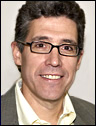Last week, we hosted our first RFID Journal LIVE! Latin America, in partnership with LOGyCA. We had 231 attendees, which exceeded my expectations, given that it was our first event in a region that has been a step behind in adopting radio frequency identification technologies. Most attendees came from Colombia, which was no surprise since the event was held in Bogotá. We also had attendees from Argentina, Brazil, Chile, Costa Rica, El Salvador, Guatemala, Mexico, Paraguay, Peru and the United States.
The attendees came from some of the major manufacturing companies in the region, including Cementos Argos (a major producer of cement), C.I. Hermeco (apparel), Colcafé (coffee), Familia Sancela (personal health and hygiene products), Harinera del Valle (food products), Honeywell, Mabe (home appliances), Noel (cookies and candies), Manufacturas Eliot (apparel), Unilever (consumer products) and Vestimundo Crystal (apparel). Among the retailers present were Almacenes Éxito, Carrefour, Falabella, Grupo Éxito, Liverpool, Olimpica and Nicolukas.
|
|
We had several great speakers from the United States. James Kress, of ADT, detailed some of the retail apparel projects in the United States on which the firm has worked. Dave Blackford updated the audience regarding the U.S. Department of Defense‘s RFID efforts. Ian Robertson, of GS1 EPCglobal, informed attendees about how companies are using GS1 standards, including the Electronic Product Code (EPC), to achieve visibility, and he also briefed them on how ultrahigh-frequency (UHF) tags can be used in anti-theft applications. Sanjay Sarma, the co-founder and director of research at the Auto-ID Center at MIT, which developed the EPC concept, discussed why adoption has been slower than expected, and why businesses need to continue pursuing RFID to improve supply chain operations.
As great as these speakers were, the case studies from Latin America stole the show. Liverpool’s Luis Vicente Ortega, in particular, wowed the audience with the ways in which the company is using RFID technology to improve its operations. The firm began a full-scale rollout in 2008, and last year began RFID-tracking all clothing cartons moving from distribution centers to stores. It has tagged all reusable containers, and reports that it achieves 100 percent read rates. In the stores, Liverpool has reduced the time required to take inventory from four hours down to 25 minutes.
Grupo Éxito explained how it is employing RFID technology within its supply chain. Elkin Alonzo Diez, Familia Sancela’s supplier relationship manager, discussed the challenges his company faced in setting up portals and screening them so that products coming in through one dock door would not be read by readers at another door. I love when speakers do this, because attendees can learn from the challenges early adopters had to overcome. (It’s a hallmark of RFID Journal events that we invite end users who speak objectively about the technology.)
Sonia del Pilar Acuna Duran, the National Federation of Coffee Growers of Colombia‘s director of information technology and communications, spoke about how Almacafé, the federation’s warehousing arm, is employing RFID to track premium coffee beans from the moment they are picked until they are sold to coffee producers. This project won this year’s RFID Journal Award for Best Use of RFID in a Product or Service (see 2010 RFID Journal Award: RFID Helps Ensure That Special Cup of Joe).
Jaime Ramirez, the information systems and technology field manager for Bechtel’s Los Bronces Copper Mine, in Chile, was perhaps the most entertaining speaker. He started off by having everyone in the audience do stretching exercises, and then made numerous self-deprecating jokes and conducted a live demonstration of his application, which worked perfectly.
This was the first bilingual event RFID Journal has ever produced, and that created some challenges, but with the help of the LOGyCA team, we were able to pull it off. LOGyCA was a great partner, handling many of the operational details and conducting additional marketing efforts for the event. We also held the conference at the company’s facility, which was ideal because it has a conference room that can hold 250 people, as well as a hall for exhibits. LOGyCA also has one of the most impressive RFID labs in the world, so attendees were able to see the technology in action in warehouse, supermarket and apparel-store settings.
What was so great about this event was how engaged the attendees clearly were. We ran our RFID Journal University preconference seminar, and right from the start, there were many questions that were so specific as to make it clear the attendees had projects in mind and had questions about their feasibility. The end users presenting case studies were peppered with questions about the challenges they faced and the benefits they achieved.
I spoke with our exhibitors, who told me the event far exceeded their expectations, both in the number of potential customers attending and the quality of the show. They said we attracted the right people—namely, decision makers.
It feels great, of course, to host a successful event. But what is even more pleasing to me is to see so many companies in Latin America embracing radio frequency identification as a tool that can improve the way they do business.
Mark Roberti is the founder and editor of RFID Journal. If you would like to comment on this article, click on the link below. To read more of Mark’s opinions, visit the RFID Journal Blog or the Editor’s Note archive.


